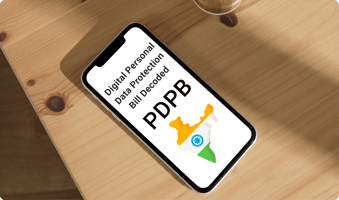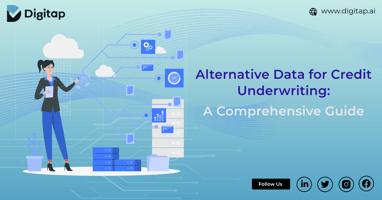Credit Risk Modelling With Alternative Data 101
.jpg?width=900&height=506&name=Credit%20Risk%20Modeling%20101%20-%20Blog%20(1).jpg)
For decades, the realm of credit scoring has been dominated by a single player: traditional financial data. Credit reports, brimming with details on loans, credit cards, and payment history, have served as the holy grail for assessing borrower risk. But in today's dynamic and data-rich world, relying solely on this limited view is like navigating a highway blindfolded – full of potential pitfalls.
This is where alternative data swoops in, offering a game-changing perspective on creditworthiness. Alternative data refers to a vast pool of information beyond the traditional financial realm that sheds light on an individual's financial behavior and responsibility. Imagine having a 360-degree view of a borrower, where you can not only see their credit history but also understand their spending habits, saving patterns, commitment to bills, and even their digital footprint. This opens a door to a more inclusive and accurate credit scoring system.
Traditional Credit Scoring: A Flawed System
Traditional credit scoring models rely heavily on financial metrics like credit history, loan repayments, and credit card usage. While these metrics hold value, they paint an incomplete picture. They often leave out:
- The New-to-Credit (NTC) Dilemma: Millions lack a credit history, making it difficult to assess their creditworthiness.
- The Gig Economy: Freelancers and self-employed individuals may have a steady income but lack traditional employment records.
- The Financially Responsible Unbanked: Some individuals manage their finances responsibly without relying on traditional financial institutions.
These limitations can lead to financial exclusion, denying credit opportunities to deserving individuals.
Why ditch the traditional credit risk analysis approach?
Traditional financial data paints a narrow picture. It often leaves out a significant portion of the population, particularly the "new-to-credit" (NTC) individuals who haven't built a credit history yet. This can lead to exclusions, missed opportunities, and biased assessments.
Here's where alternative data steps in, offering a wealth of information sources to consider:
- Beyond the Banking Realm: Explore utility bill payments, rental history, and even phone number usage (think: responsible bill payers tend to have stable phone numbers). These data points provide insights into an individual's ability to manage recurring expenses and meet financial obligations.
- The Power of Digital Transactions: In today's digital world, bank account information, transaction history, and UPI usage reveal valuable insights into spending habits and financial stability. Responsible use of digital payments, especially timely settlements, can indicate financial discipline.
- Employment Details: Steady employment is a strong indicator of a borrower's ability to repay loans. Alternative data can offer insights into employment history, income stability, and even the sector of employment.
- Social Data (with Caution): While social media data usage needs careful consideration with regards to privacy regulations, certain aspects can potentially offer glimpses into an individual's financial outlook. Responsible budgeting habits and awareness could be reflected in online behavior.
Benefits of Embracing Alternative Data
Financial Inclusion:
- Broaden Access to Credit: Offer credit opportunities to previously underserved populations, such as NTC customers, freelancers, and small business owners.
- Empower Economic Growth: Enable individuals and businesses to access capital, fostering economic development and financial stability.
Informed Decision-Making:
- Accurate Risk Assessment: Gain a more comprehensive understanding of borrower risk, reducing the likelihood of loan defaults and charge-offs.
- Tailored Financial Products: Develop personalized credit products that meet the specific needs and circumstances of different borrower segments.
Operational Efficiency:
- Streamlined Onboarding: Accelerate the customer onboarding process with faster and more accurate credit assessments.
- Improved Customer Experience: Provide a seamless and efficient borrowing experience, enhancing customer satisfaction and loyalty.
Risk Mitigation:
- Early Detection of Red Flags: Proactively identify potential risks, such as fraudulent activity or signs of financial distress, enabling timely intervention.
- Mitigated Losses: Reduce the financial impact of bad debts and charge-offs, protecting the lender's bottom line.
Faster & Efficient Onboarding:
- Streamlined Application Process: Simplify the credit application process, reducing turnaround times and improving customer experience.
- Automated Decision-Making: Leverage AI and machine learning to automate credit decisions, enabling faster approvals and disbursements.
The Future of Credit Risk Scoring: A Symphony of Data
The future of credit scoring lies in collaboration. Traditional financial data shouldn't be discarded, but rather harmonized with the rich tapestry of alternative data sources. This creates a more accurate and inclusive credit scoring system, allowing lenders to extend a helping hand to deserving individuals and unlocking financial opportunities for all.
Ready to Embrace the Power of Alternative Data?
As technology evolves and data sources diversify, the potential of alternative data continues to grow. Are you ready to explore the possibilities and unlock the power of this innovative approach? Connect with us TODAY!


